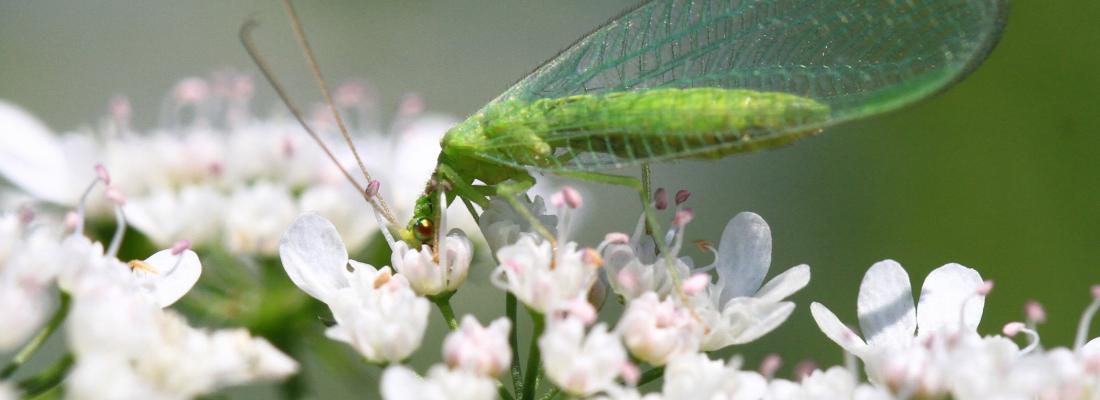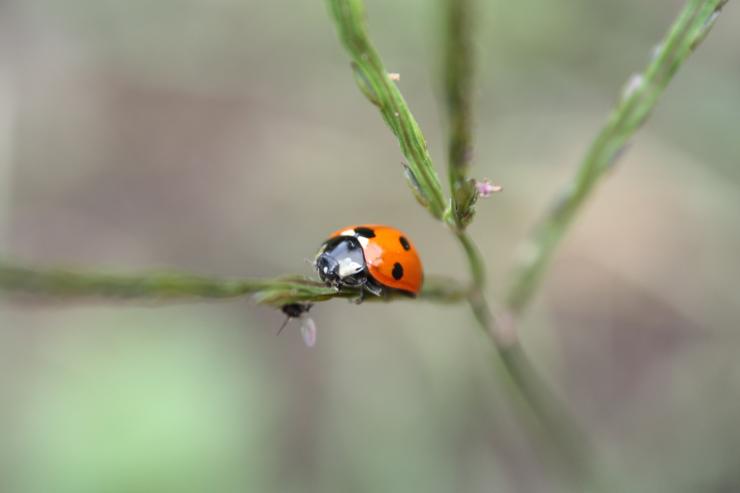Biodiversity Reading time 3 min
Semi-natural habitats help keep pests and weeds in check
Published on 03 August 2018

Optimising the natural regulation of pests (weeds and predators) is a major challenge for the development of agroecology and cutting back on phytosanitary products. A paradigm has emerged in agroecology over the past two decades indicating that landscape composition, and particularly the share of semi-natural habitats (forests, hedges and semi-natural grasslands), is a key factor in explaining the activity of the natural enemies1of crop pests and weeds. A worldwide consortium led by two universities in California - UC Davis and Stanford - and involving INRA researchers, explored this issue with a view to analysing, at global scale and for a wide range of crops, to what extent landscape composition plays a role in explaining the level of biocontrol and its impact on crops.

A worldwide database for understanding the regulation of pests and weeds by means of natural enemies
The consortium consisted of no fewer than 132 studies representing more than 18 000 observations of pests and their natural enemies over more than 6 700 sites across 31 different countries around the world. Findings were analysed to decipher what effect landscape composition has on the abundance of pests and their enemies, the regulation level of pests, damage done to crops, and yields. A variety of situations were taken into consideration, ranging from farmland in California to tropical cacao plantations to cereal crops in Western Europe. The resulting database constitutes a unique opportunity to test the robustness and variability of the effects of landscape composition on natural regulation on a global scale.
Contrasting responses of natural regulation to landscape composition on a global scale
The scientists2found that landscape composition plays a significant role in the variability of the activity of natural enemies, level of regulation and damage done to crops. Contrary to their initial hypotheses, they also found that the effects of semi-natural habitats on natural regulation vary widely across the world, showing no consistent trends. Although a part of the studies does in fact show that maintaining semi-natural habitats in the landscape helps keep predators in check, about the same number of studies also shows the negative effects these habitats have on natural regulation. This synthesis study has therefore revealed situations in which the conservation of semi-natural habitats and the regulation of predators coincide. It also highlights that the response of different groups of natural enemies and the levels of natural regulation depend on landscape composition.
The same consortium is currently forging ahead in its research, looking for ways to integrate other explanatory variables (e.g. ecological characteristics of species, agricultural practices), other aspects of landscape structure, and abiotic parameters, to better identify situations that favour the natural regulation of pests and predators. The resulting worldwide database will therefore only grow and be made available to all those tackling related issues, with the aim of developing decision-making tools to help farmers manage the natural regulation of farmland.
1 Natural enemies are all species that are detrimental to the pest species that attack crops. They may be predators or parasites.
2 The following research units are involved in France: Vine Health and Agroecology (INRA, Bordeaux Sciences Agro); Biodiversity, Agroecology, Management of Landscape (INRA, Agrocampus Ouest, ESA), Pests and Diseases: Risk Analysis and Control (Cirad); AGroecologies, Innovations & Ruralities (INRA, INP-Toulouse, ENFA, CNRS); Institut Sophia Agrobiotech (INRA, CNRS, Université Côte d’Azur); Plants and Cropping Systems in Horticulture (INRA); Institute for Genetics, Environment and Plant Protection (INRA, Agrocampus Ouest, Université Rennes 1); Dynamics and Ecology of Agroforestry Landscapes (INRA-INPT); Agroecology (INRA-AgroSup Dijon); Agronomy (INRA, AgroParisTech); Ecology and Dynamics of Human-influenced Systems (Université de Picardie Jules Verne).
Crop pests and predators exhibit inconsistent responses to surrounding landscape composition. Karp D.S.et al. PNAS. 2 août 2018. https://doi.org/10.1073/pnas.1800042115
